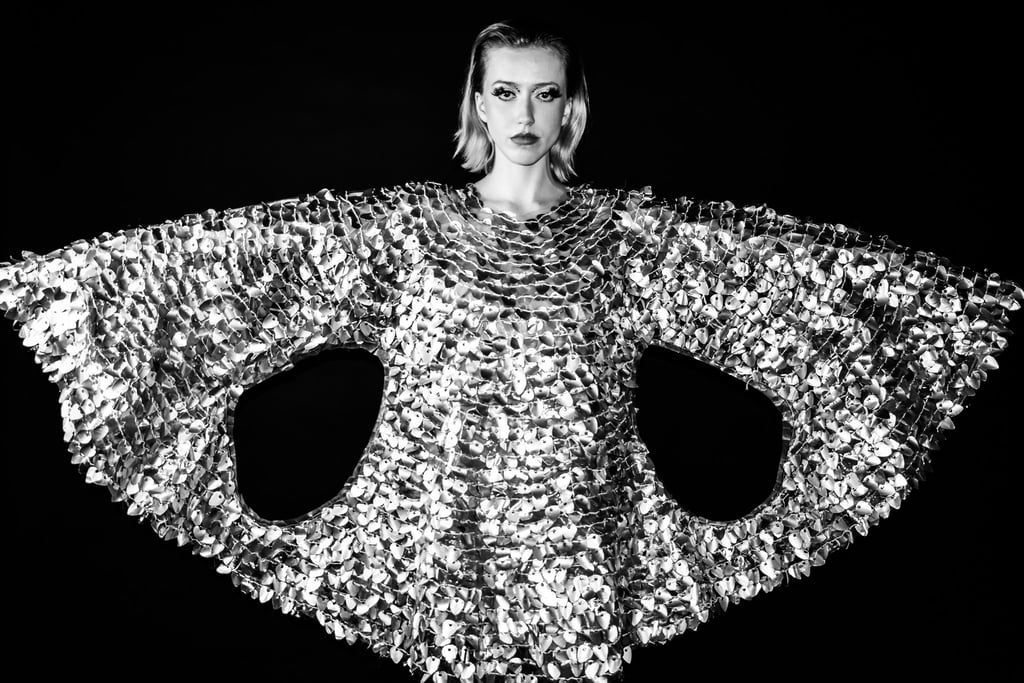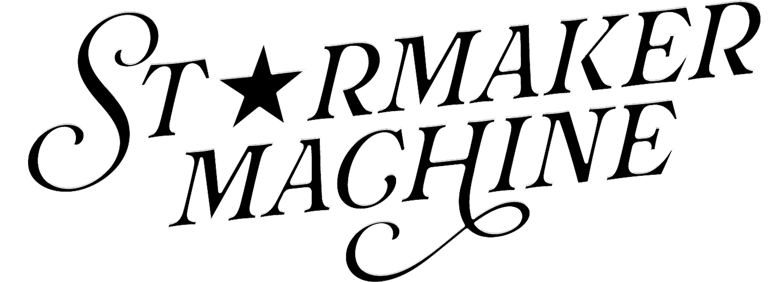Fashion You Can Fight For with Tristian Laney | In Conversation
By Kitty Quinn, Photographed by Milan Lazovski, Styled by Milan Lazovski and Kitty Quinn, Garments by Tristian Laney, Model: Olivia Zeigler
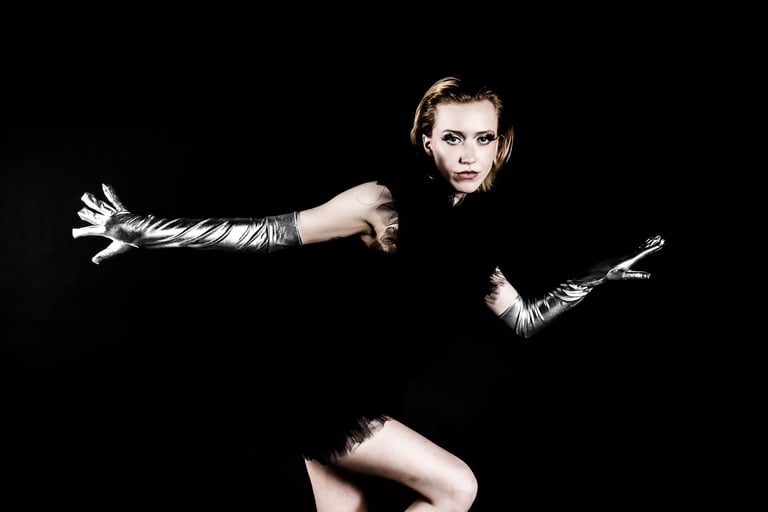

With the trend cycle in a constant whirl, fast fashion being produced at rapid paces and the fight for a more sustainable fashion industry, it is important now more than ever to amplify the voices of aspiring designers. Starmaker Machine’s Milan Lazovski has had the opportunity to meet and work alongside several young fashion majors since working with the Michigan State University publication, VIM. Celebrating this young talent, the magazine throws annual fashion shows where designers have the opportunity to explore their passions and be noticed by their peers. Within this realm, Milan discovered Tristian Laney who produced over 20 looks for this year’s show.
Starting out as a young child doing sewing projects with his mother, it’s safe to say that Laney has always had a passion for artistry. Inspired by the iconic muppets, drag, and queer culture, Laney’s work is incredibly imaginative and utilizes out-of-the-box methods that make his pieces unlike anything else. Starmaker Machine was instantly drawn to the silhouettes reminiscent of the 1960s and drew upon that mainly when styling the pieces Laney provided to us.
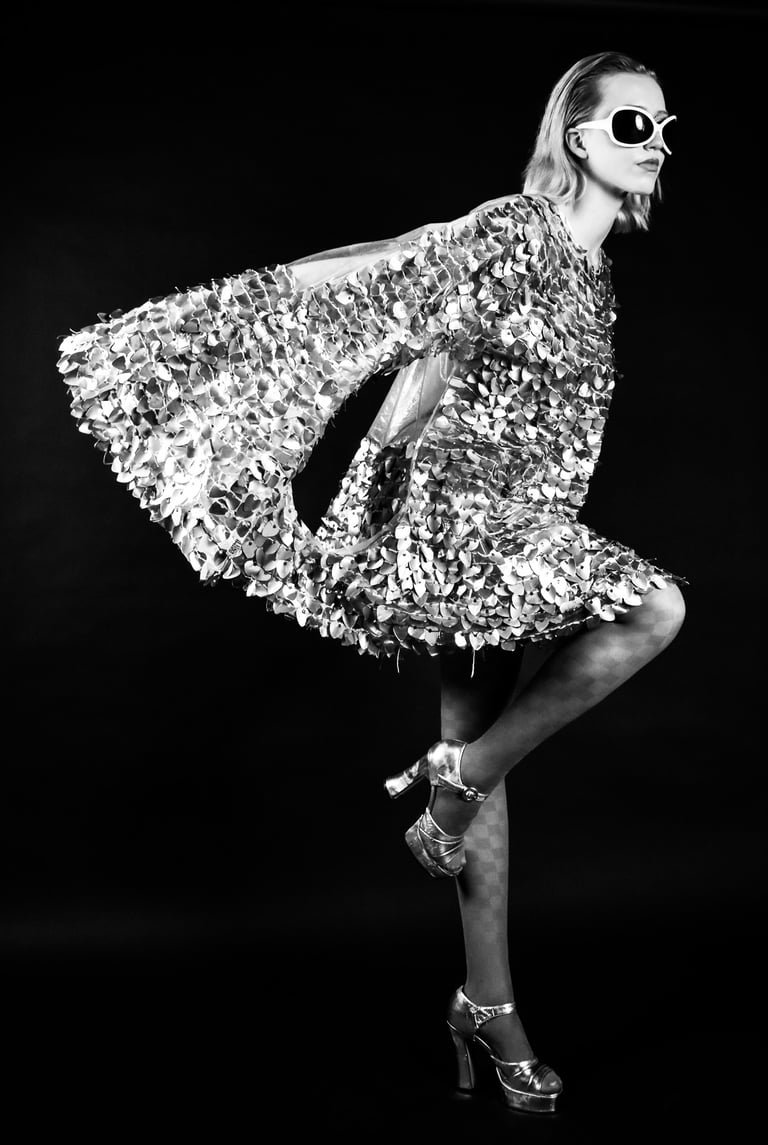

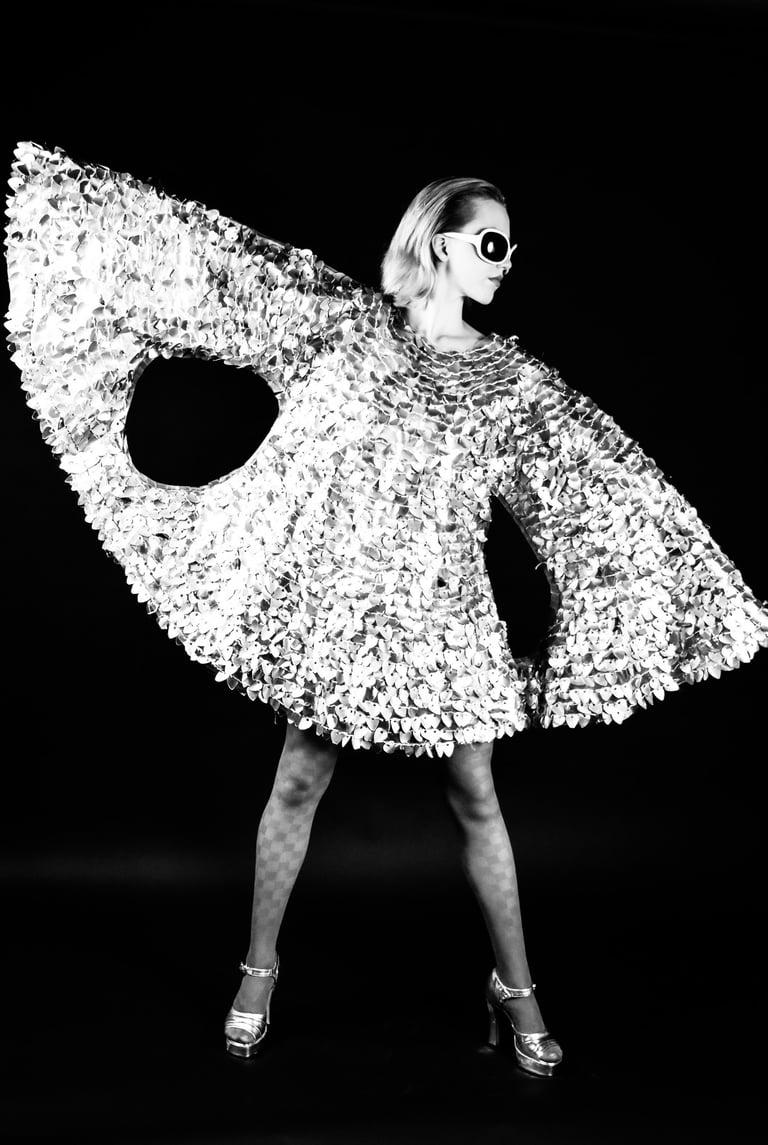

KITTY QUINN: At what age did you get interested in fashion and when did you start sewing and making clothes?
TRISTIAN LANEY: I have had access to a sewing machine for as long as I can remember. My mom has always been a huge inspiration in my life to really get crafty. I remember starting with little hand sewing projects as young as 7 or 8, but I really started making a personal choice to go in this direction around 6th grade. I made my own Wonder Woman cosplay which was kind of my first introduction into costuming and exaggerated fashion. Since then I’ve been non-stop.
KQ: Wow, that's so impressive! What would you say inspires you most when it comes to your craft, and would you say there are specific people and things you’ve found yourself continually referencing throughout the time you’ve been sewing?
TL: Thank you! I am definitely a person who likes to have fun. I think life is too short to wear boring clothes, so I decided to make clothes that show people that fun clothes are the way to go. I reference the 60s and the 80s pretty hard in textiles, texture, color and silhouette. Specific things I love especially are the Muppets. I am a big fan of Jim Henson’s work. I like to say I design clothing for the Muppets of society. I also really like the work of Todd Oldham— specifically his 1995 collections. Other elements I like to reference are queer art, drag and really playing into exaggeration.
KQ: I loved the pieces you lent to us. We went to a very 1960s space-age with the styling. We kind of had a vision when we were choosing pieces that you were letting us pick from.
TL: I sent it to my father and he said, ‘That is the way your pieces are meant to be worn’. He actually wanted to know where you guys got the helmet. I was like, ‘I don't know, hands off on my part!’ [laughs].
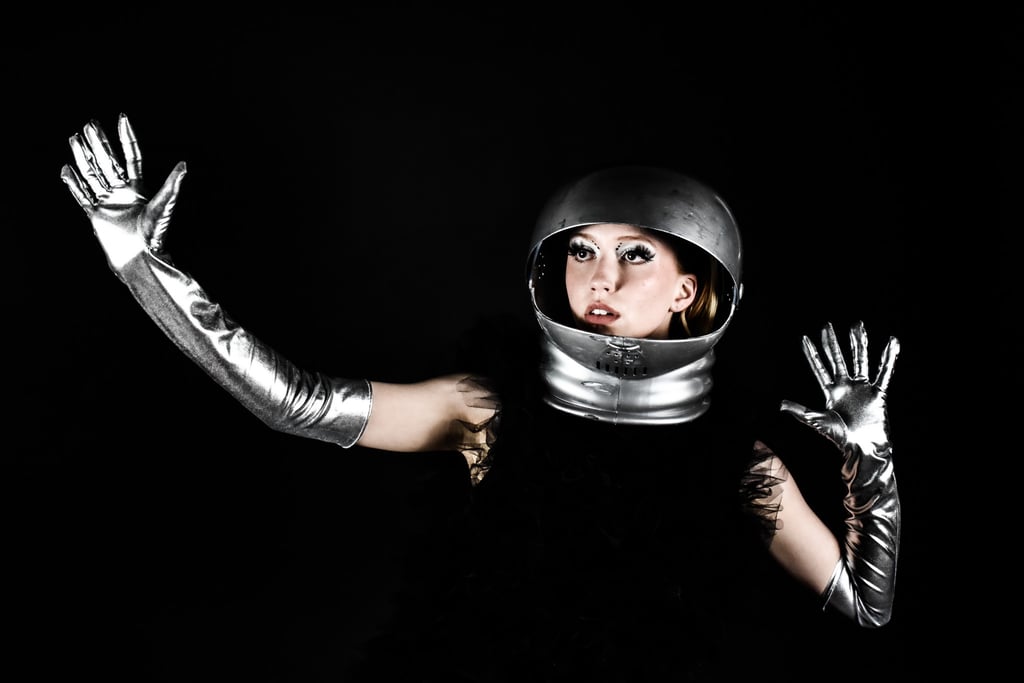

Laney let us choose a few stellar pieces from his repertoire, including an amazing black tulle mini dress reminiscent of a puffball, a glittering 60’s inspired recycled material dress, a boxy white dress and an iconic corset made from recycled UGG boots paired with a skirt made out of a tapestry blanket. It was an interesting experience to brainstorm different ways to bring these looks to life— and it surely paid off with the approval from Laney’s father!
With the color palette of black, silver and white as well as the geometrical shapes of the garments, we played up the space-age look of the 1960s popularized by the designers Andre Courreges, Paco Rabbane and Pierre Cardin. Goggles, helmet-like hats, gloves and crafty materials like patent leather, plastic and sequins became popular and inspired us greatly when putting together the looks for this feature.
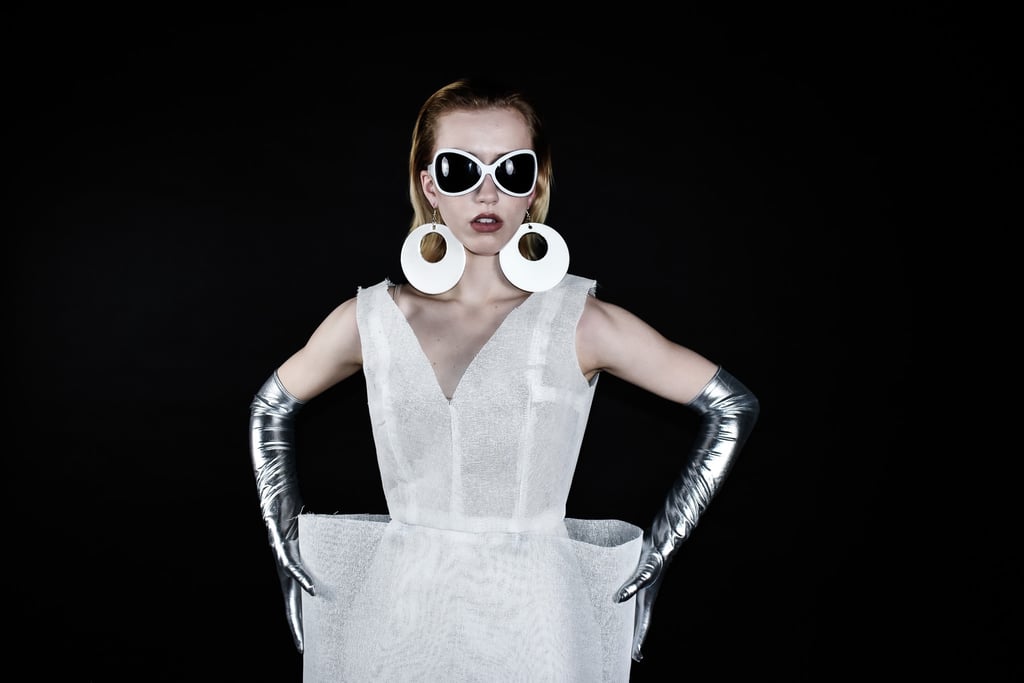

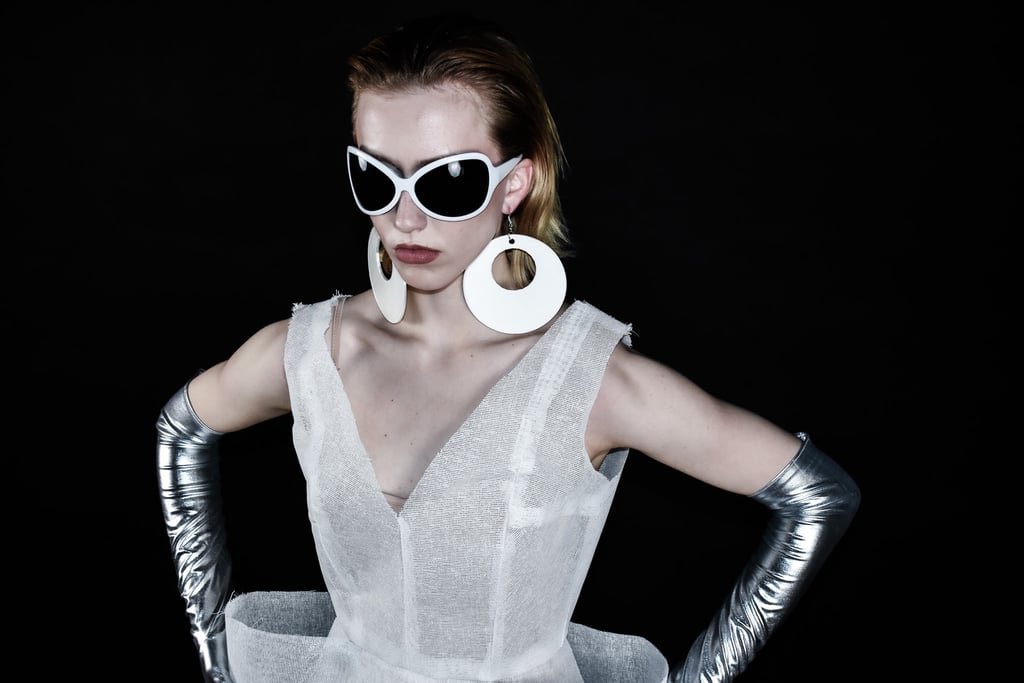

KQ: We actually had that laying around and I painted it silver because I realized we can’t just play into the 1960’s space-age vibe and not have some sort of helmet. I’m so glad you liked it! Segueing more into your clothing line, I understand that it’s called Overgrown Apparel. What was the inspiration behind the name that you chose?
TL: It originally came from the first big collection I did with VIM with the idea of outgrowing a confined box. Then you kind of get into the idea of natural elements like flowers and ivy being overgrown. I wanted to take what is normal from society and outgrow that norm. I really want fashion and my brand to be seen as taking what is normal and just going a bit further.
KQ: I really love that analogy of outgrowing the societal standard. I don’t think enough people are challenging that, so it’s really refreshing to see someone as young as you striving for that. Building on that, I noticed that your tagline is ‘Fashion to Fight for’— What does this mean for you personally and when did you start attaching that to your branding?
TL: My first Instagram account was called ‘you can fight me’ and I made it when I was twelve. From that, I made a Depop for a while called Fight Me Boutique that ended up getting pretty big, but I had to abandon it when I started to get busy with college. I still really believed in that idea of fighting for what you want. Taking that queer aspect, being a trans person, fighting for space and being allowed to take up that space is an ongoing battle every day. I really wanted to bring that in as well as fighting for better clothing and better sustainability practices within clothing. I want my clothing to be something that is worth putting a step forward for.
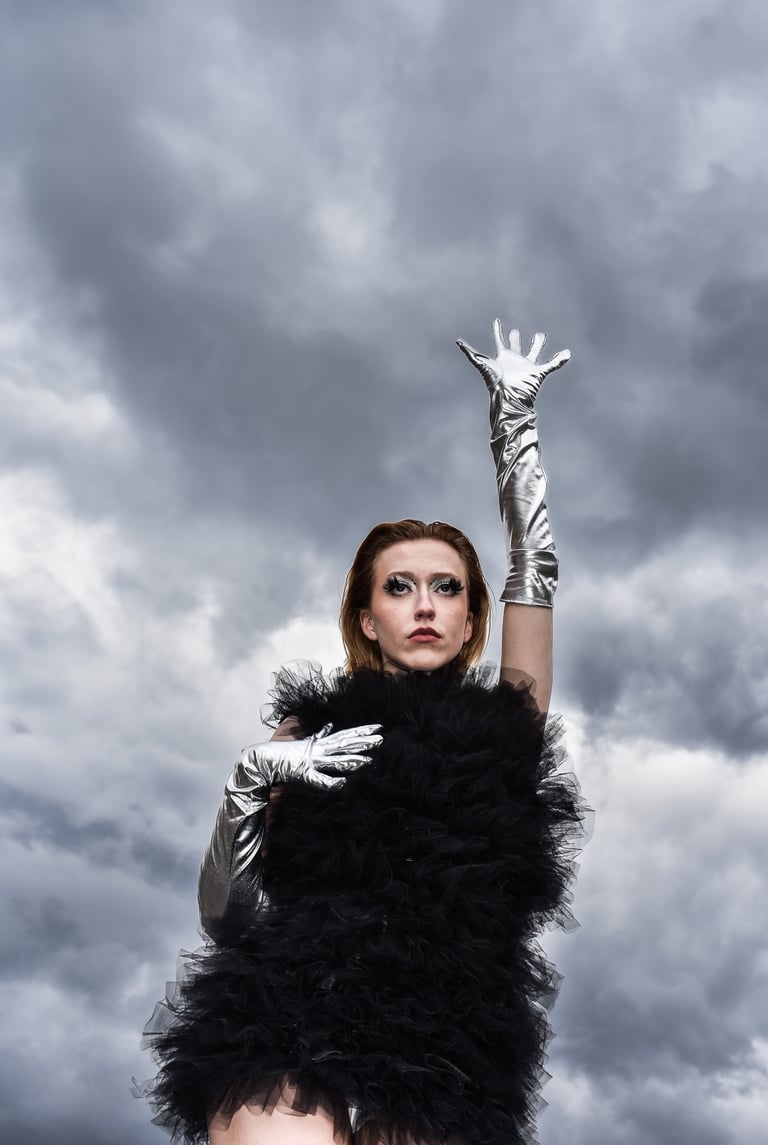

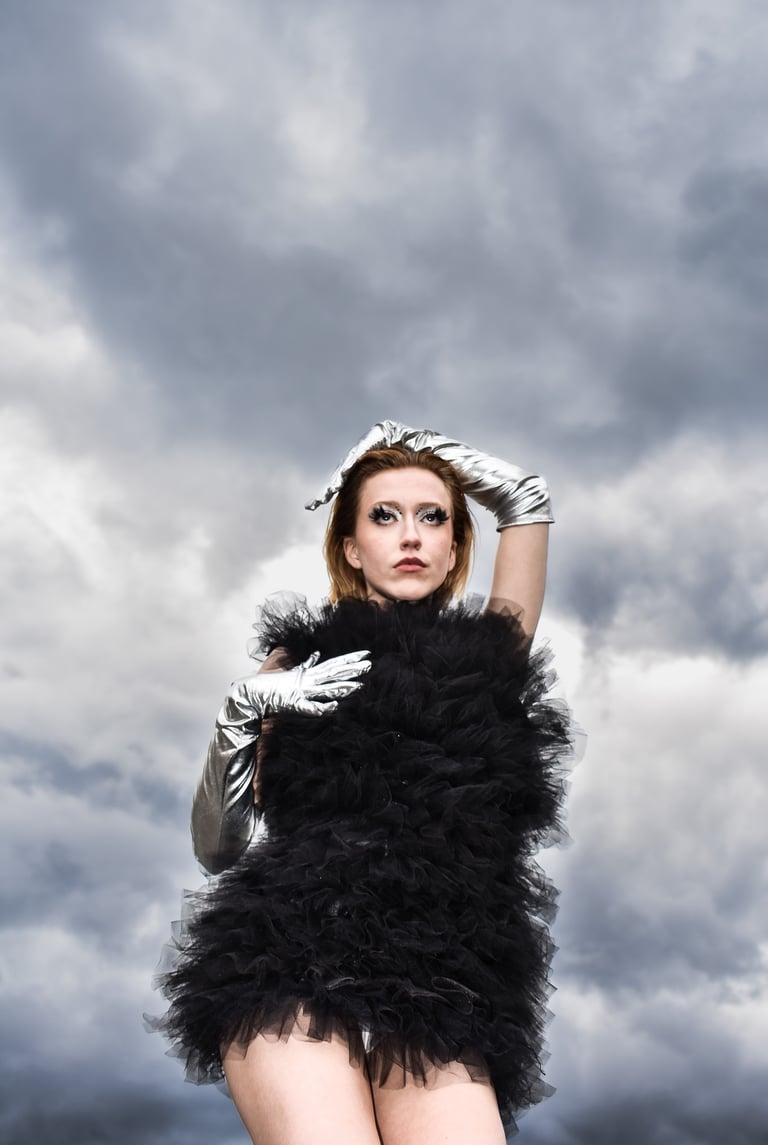

Trans and queer representation within fashion is now more important than ever. Though society has made great strides for a more open future for queer people, like Laney said, it is still a constant battle every day merely to exist. Fashion is dominated by queer people, yet many do not receive the respect and recognition deserved for their large contribution to the industry. It’s as simple as without queer people, there is no fashion industry.
KQ: I feel like it's so important– especially now– for everyone to fight for queer people. It's very heartbreaking to see what’s been going on so it's very refreshing to see you bringing a new light to that and your identity through your art. Off of that topic, if you could choose someone dead or alive to design and make a piece for who would that be and why?
TL: My thoughts go immediately to David Bowie, Jimi Hendrix, Prince— some of that really traditional beauty standard queerness that everyone loves. More modern– after seeing the Met Gala– I’d love to work with Doja Cat. I think we’d have a lot of fun together because she’s someone who isn’t afraid to try something new.
KQ: Oh my god, I love everyone you chose, especially Bowie! Also Doja Cat— she’s been killing lately with her fashion choices. I love that she’s not afraid to take risks and start conversations without care for what people might say about her. Touching on the Met Gala topic a bit, do you have a favorite fashion house? And to you, what makes a fashion house stand out opposed to others?
TL: I have always liked weird things so obviously what first comes to mind is Moschino, but specifically under the direction of Jeremy Scott. Connecting to that, I love Miu Miu. They do a great job really pulling out more teen looks that I’ve found to be really refreshing. You have to give it up to the classics like Chanel and Louis Vuitton who are trying to push those boundaries while remaining classic.
KQ: I love vintage Moschino. I also wanted to know, what are your thoughts on the current state of fashion and what would you do differently if you were to direct a major fashion house?
TL: I think fashion as we see it right now very obviously has so many issues from creation to production to consumption. I am a big believer of sustainability. You can see now with Shein and mall brands that the trend cycle is so quick, and the expectation on everyone to follow trends is so strong. I think If I had the opportunity to run a fashion house, I’d focus on de-influencing and taking my art and making the statement that the most important thing in fashion is to do what makes you happy, whether people love it or hate it. I also want to encourage people to shop sustainably, buy pieces that will stay with them forever, and stay away from unethical labor and creation of garments.
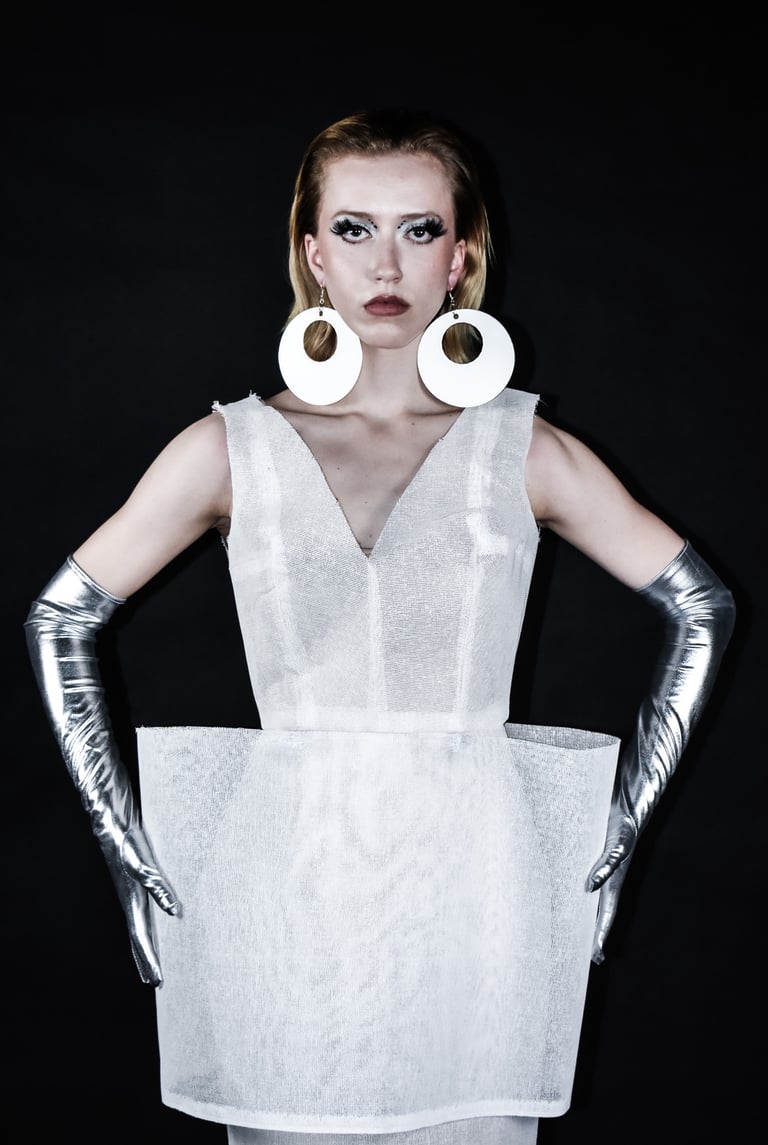

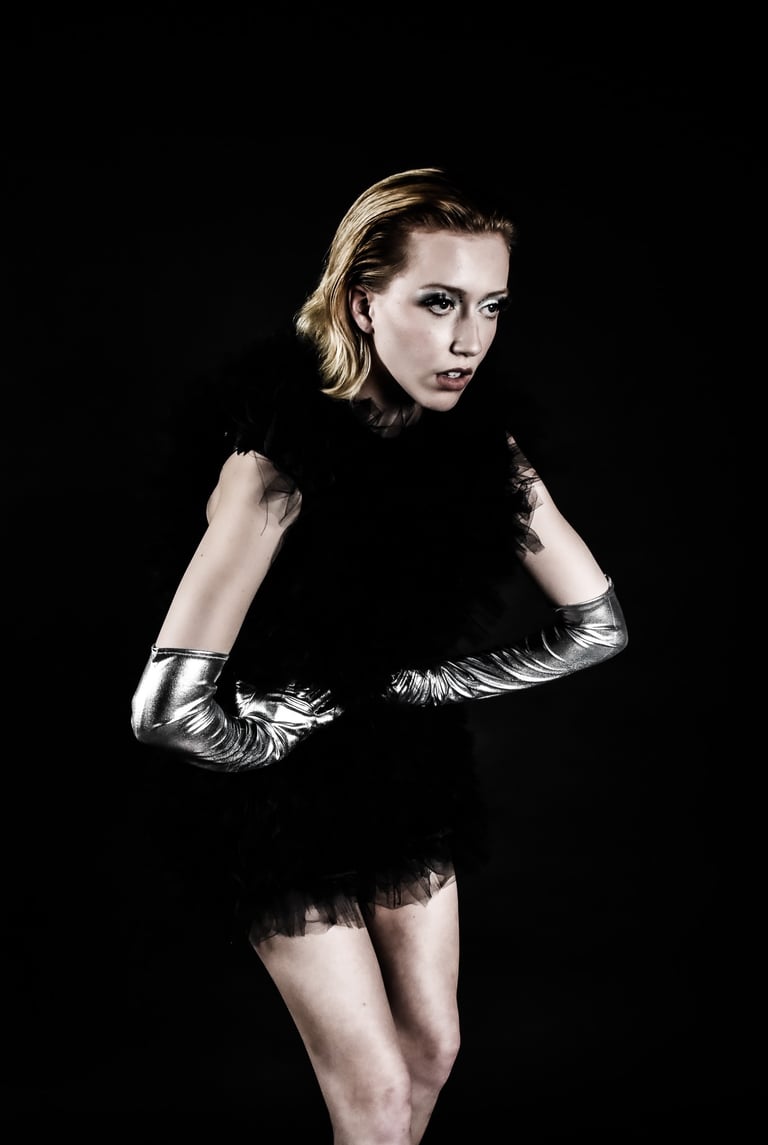

Fashion is a lot more political than people give it credit for. There is an ongoing crisis of human rights and sustainability issues due to major fast fashion manufacturers needing to rapidly make and sell garments with the current trend cycles changing nearly daily. It is crucial that future fashion industry professionals like Laney take this into account and are looking for an active change. Hearing Laney talk about his approach of mindfulness when creating garments and potentially leading a brand in the future that not only does what makes him happy but also would create a positive change is extremely hope-inspiring. While there are big fashion labels that are beginning to tackle this approach and already have in the past, it's comforting to know the future of the world is in the minds of young designers.
KQ: That reminds me a lot of Vivienne Westwood’s outlook before she passed away, and how she was very big with her activism throughout her career. I think that it is so important and I don't think there is enough stress on that within the fashion industry despite the amount of human rights and sustainability issues it is faced with on a daily basis. Do you have any idea of what direction you’d like to take after college with your brand and the style of fashion you create in general?
TL: I have a secret yearning to do costuming for Broadway, stage production, movies and television, so if I was given the opportunity I’d definitely start leaning that way. For my own brand, I want to see myself be in a creative position, and explore and have fun. I would like to be able to play in the fashion sandbox.
KQ: I really like that sandbox analogy, and I can’t wait to see what you come up with in your future endeavors. For my last question, 5. If you could choose any specific film, book or album that you feel has consistently shown up for you and inspired you throughout your life and music career, what would that be and why?
TL: Probably the original 1970s Muppet movie. In the end, there's this line, ‘Life’s like a movie, write your own ending. Keep believing, keep pretending. We've done just what we set out to do. Thanks to the lovers, the dreamers, and you’. Taking that idea of just staying inspired, going to different places, meeting random people, and to keep experiencing— I really took that to heart.
That line from The Muppet Movie (1979) perfectly encapsulates the kind of hope that talking to a young, future professional instills in you. Sitting down with Laney and learning the unique perspective of a trans person navigating their identity and beliefs through the lens of his passion for artistry was truly interesting and inspiring. Laney’s ambition and creative potential are clear, and I am already loving everything I have seen from him. If you’re interested in purchasing a piece from Overgrown Apparel, check out Tristian’s website overgrownapparel.com!
